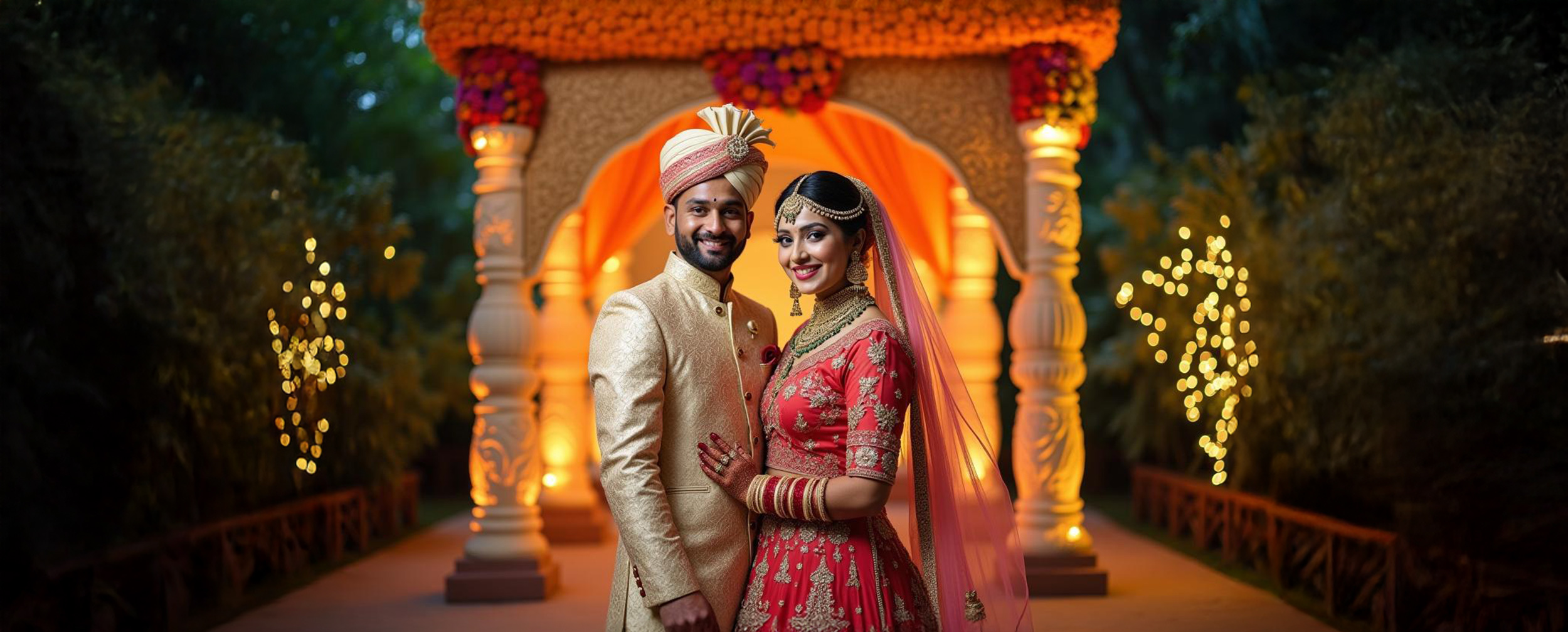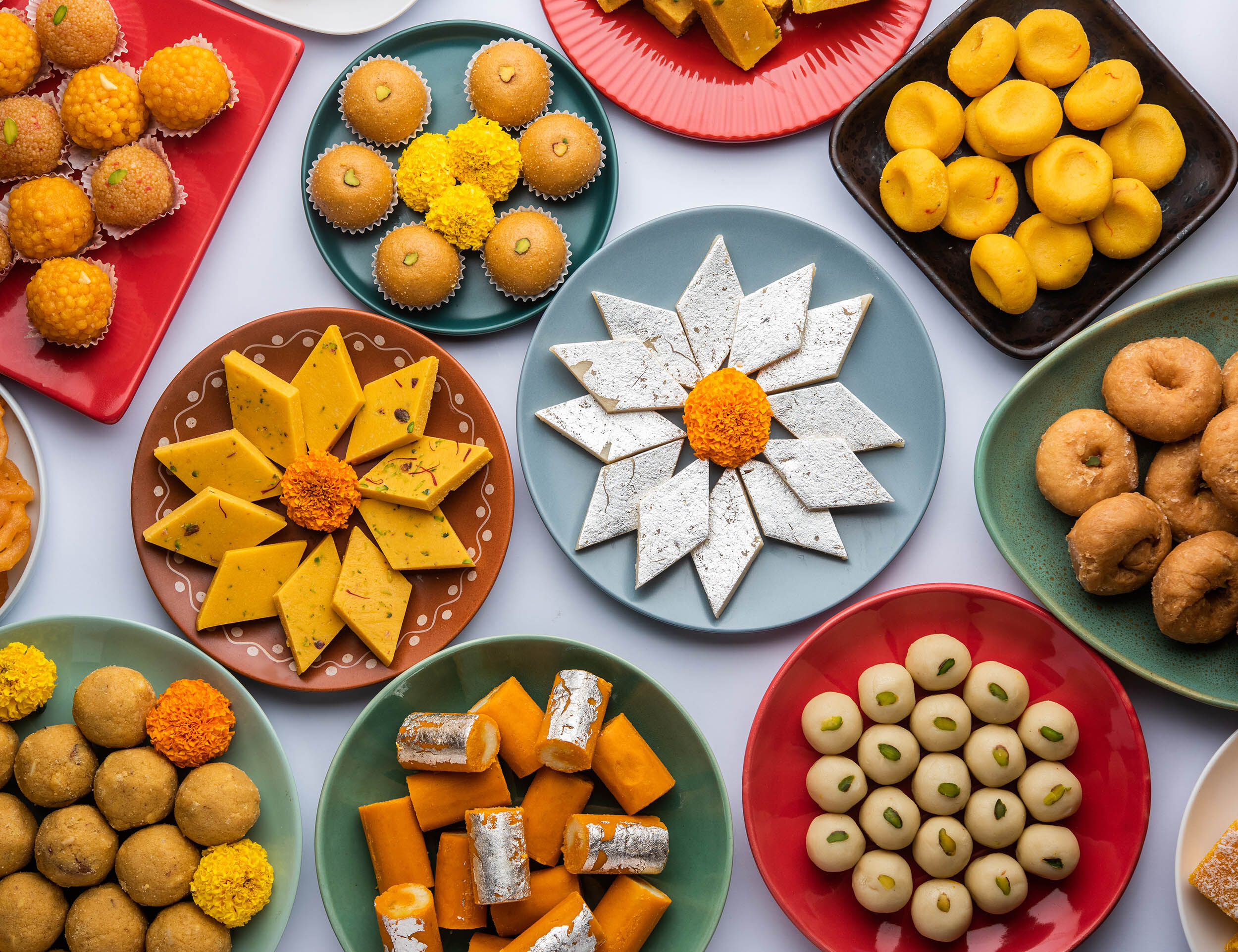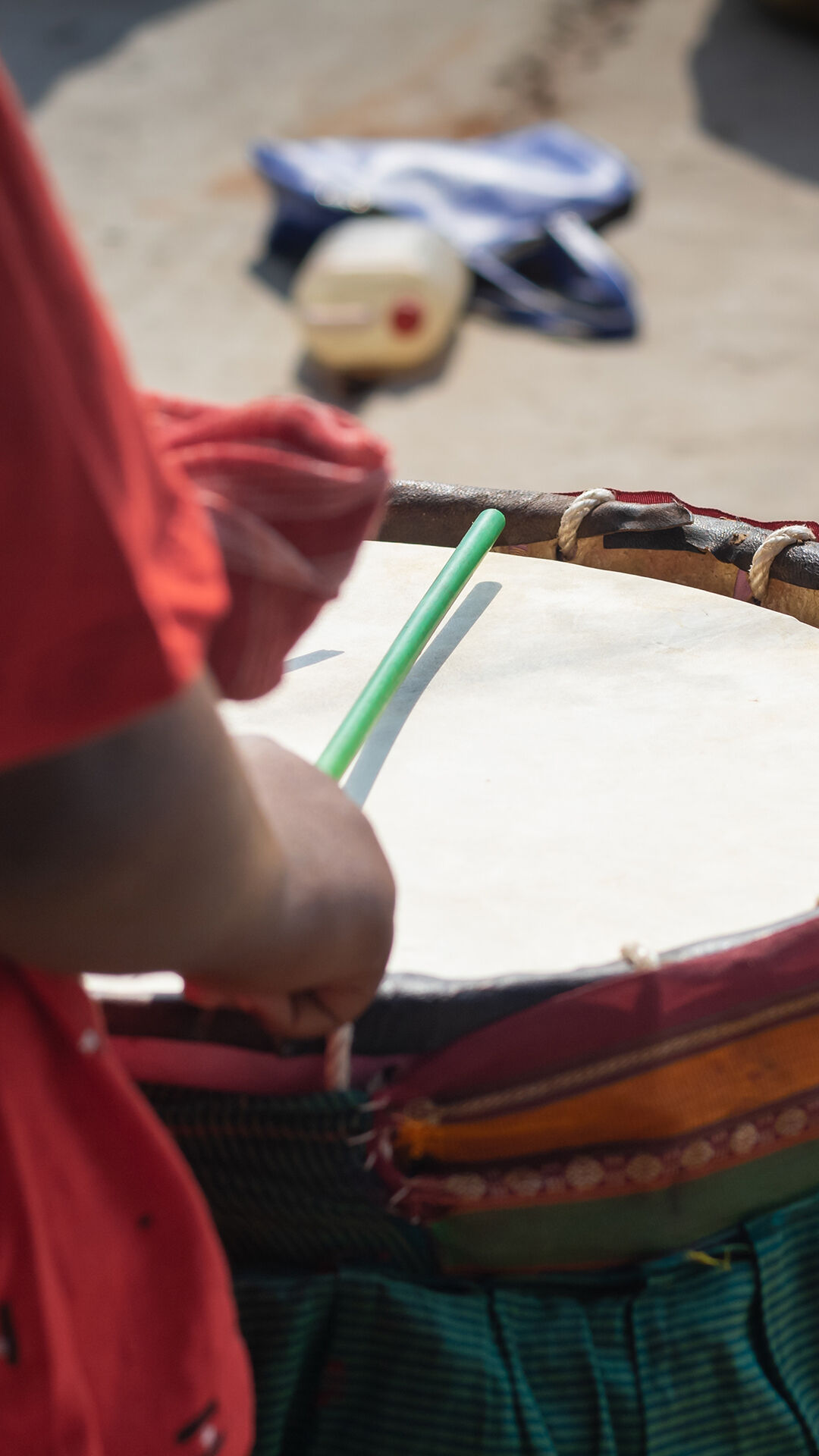STORIES BY MANYAVAR & MOHEY

Lifestyle
Immerse Yourself in the Colourful World of Bengali Weddings and Culture
Date 6 May 2025 Reading time: 7-10 mins
When you receive an exquisitely handcrafted invite on a sheet of Shola wood, you know you're being beckoned into the captivating world of a Bengali wedding. As you step into the venue, the air is infused with the heady aroma of mallick, a fragrant garland of white flowers that adorns the entrance. The chatter of guests mingles with the soulful strains of the shehnai, as the groom arrives on a regal white horse, flanked by his family holding brass lamps. This is just a glimpse of the rich tapestry of Bengali wedding traditions that have been lovingly preserved over generations. Join us as we delve deeper into the fascinating customs, exquisite attire, and flavourful cuisine that make Bengali weddings an unforgettable experience.
The Richness of Bengali Culture
Bengali culture is a melting pot of influences, shaped by a long history of art, literature, and music. From the ancient terracotta temples of Bishnupur to the haunting baul music, every aspect of Bengali culture tells a unique story.
What stands out is the seamless fusion of traditions and trends. You'll spot a quintessential Bengali woman draped in a tant saree, accessorised with smart sunglasses and a leather bag. The famous Bengali mishti is now being reimagined in fusion desserts.
The richness of Bengali culture lies in its ability to evolve while staying rooted. This balance between old and new is most visible in Bengali wedding traditions. Age-old rituals like subho drishti and saat paak coexist with destination weddings and designer bridal sarees as Bengali wedding attire. The warmth of Bengali hospitality remains intact, even as the grand weddings get grander.
Ceremonial Wear in Bengali Culture
In the vibrant canvas of Bengali culture, conventional attire plays a starring role, especially during weddings. Let's take a closer look at the timeless garments that drape Bengali men and women in grace and elegance.
Men's Ceremonial Wear
For Bengali men, the classic combination of a crisp white dhoti and panjabi (kurta) is a sartorial staple. The dhoti, a long rectangular cloth draped around the waist and legs, is paired with a knee-length panjabi, often adorned with delicate embroidery around the collar and buttons. In Bengali wedding tradition, the groom often dons a silk dhoti and resplendent sherwani or a kurta jacket set, complete with an uttoriyo (a stole draped over the shoulders).
Women's Ceremonial Wear
Bengali women are known for their love affair with handloom sarees, each weave telling a story of the region's rich textile heritage. From the gossamer-light tant to the opulent Baluchari, sarees are an integral part of a Bengali woman's wardrobe. During a Bengali wedding ritual the saree is draped in a unique Bengali style, with the pallu (the loose end) worn in the front, often secured with a key ring at the waist. Blouses in Bengali wedding attire are usually elbow-length with intricate embroidery or brocade work.
Bengali Wedding Attire: Festive and Wedding Wears
Bengali wedding traditions are a visual feast, with the bride and groom resplendent in ceremonial finery. When it comes to Bengali wedding attire, the bride is adorned in a vibrant red Banarasi or bridal saree, heavily embellished with zari work. Gold jewellery, including the exquisite Nath (nose ring), Sitahar (a long necklace), and Chur (bangles), complete her regal look. Some modern brides opt for a Banarasi silk lehenga, adding a contemporary twist to tradition.
The groom looks dashing in a finely tailored kurta for men, often in hues of gold, ivory, or maroon. A silk uttoriyo and a topor (a conical headgear decorated with gold and pearls) add a touch of regal splendour to the groom's Bengali wedding attire.
Bengali Culture Food: A Gastronomic Journey
Bengali cuisine is an integral part of the region's cultural identity, known for its subtle flavours, diverse ingredients, and extensive spread. Let's embark on a culinary adventure through the kitchens of Bengal and also get a glimpse of scrumptious Bengali wedding food menu.
The Love for Rice and Fish
For Bengalis, a meal is incomplete without a generous helping of steamed rice and fish curry. From ilish (hilsa) to rohu and katla, fish is an indispensable part of the Bengali diet and, by extension, of a Bengali wedding food menu. The fish is often marinated in mustard paste, fried, or steamed in banana leaves, resulting in a burst of flavours that dance on the palate. The rice and fish thali is also a mainstay of Bengali wedding tradition
Sweet Dishes: The Pride of Bengali Cuisine
Bengalis are known for their insatiable sweet tooth, and no Bengali wedding tradition feast is complete without an array of mouthwatering desserts. Rosogolla, the king of Bengali sweets, is a cottage cheese dumpling soaked in sugar syrup. Other popular sweets like mishti doi (sweetened yoghurt), sandesh (a fudge-like treat made with cottage cheese), and nolen gurer payesh (a rice pudding flavoured with date palm jaggery) usually feature in a Bengali wedding food menu.
Street Food Culture in Bengal
A Bengali wedding turns into a vibrant food festival, offering an irresistible array of snacks and savouries that captivate the guests. Puchka, the Bengali version of pani puri, is always a crowd-pleaser, offering bursts of tangy delight with every bite. Ghugni, a spicy curry made with yellow peas, brings warmth and flavor to the festivities, while jhalmuri, a zesty mix of puffed rice, onions, and spices, adds the perfect crunch to the celebration. No Bengali wedding spread would be complete without telebhaja, a selection of crispy, deep-fried fritters, often enjoyed with a cup of piping hot chai, making for the ideal snack to enjoy while mingling with family and friends.
More Aspects of Bengali Culture
Listing down a few more palatial elements of Bengali culture and traditions. These elements are celebrated worldwide and are known for their legacy. A part of them can be seen in Bengali wedding traditions as well. Let's get a brief introduction to them now!
Music and Dance
The melodious strains of Rabindra Sangeet, a collection of songs written and composed by Tagore, are an integral part of Bengali culture. Baul music, a form of folk music that originated in Bengal, is known for its philosophical lyrics and soulful renditions. Chhau dance, a martial arts dance form, is another cultural gem of the region. A rich portrayal of these performing arts can be seen in Bengali wedding traditions.
Art and Craft
Bengal has a rich tradition of handicrafts, with each district specialising in a unique art form. From the intricate terracotta temples of Bishnupur to the delicate Kantha embroidery of rural Bengal, the region's artistic heritage is diverse and captivating. Sholapith, the craft of carving intricate designs on a spongy plant stem, is often used to create stunning decorations for Bengali wedding traditions and festivals.
The Uniqueness of Bengali Wedding Traditions and Culture
As we come to the end of our journey through the vibrant tapestry of Bengali culture, it's evident that the region's traditions are deeply rooted in a love for art, literature, music, and cuisine. Bengali wedding traditions are a beautiful amalgamation of these diverse elements, creating an unforgettable experience for both the couple and their guests.
At Manyavar and Mohey, we understand the importance of cherishing these timeless traditions while embracing contemporary styles. Our exquisite collection of lehengas, sarees, sherwanis, and kurta sets is designed to help you celebrate your heritage in style. Whether you're a bride looking for the perfect red Banarasi or a groom in search of a regal sherwani, we have something for every taste and occasion.
So, go ahead and immerse yourself in the magic of Bengali culture. Let the soulful strains of the shehnai, the aroma of mishti doi, and the rustle of handloom silk be your guide as you create memories that will last a lifetime. And remember, with Manyavar and Mohey by your side, you're not just wearing an outfit; you're wearing your heritage with pride.







